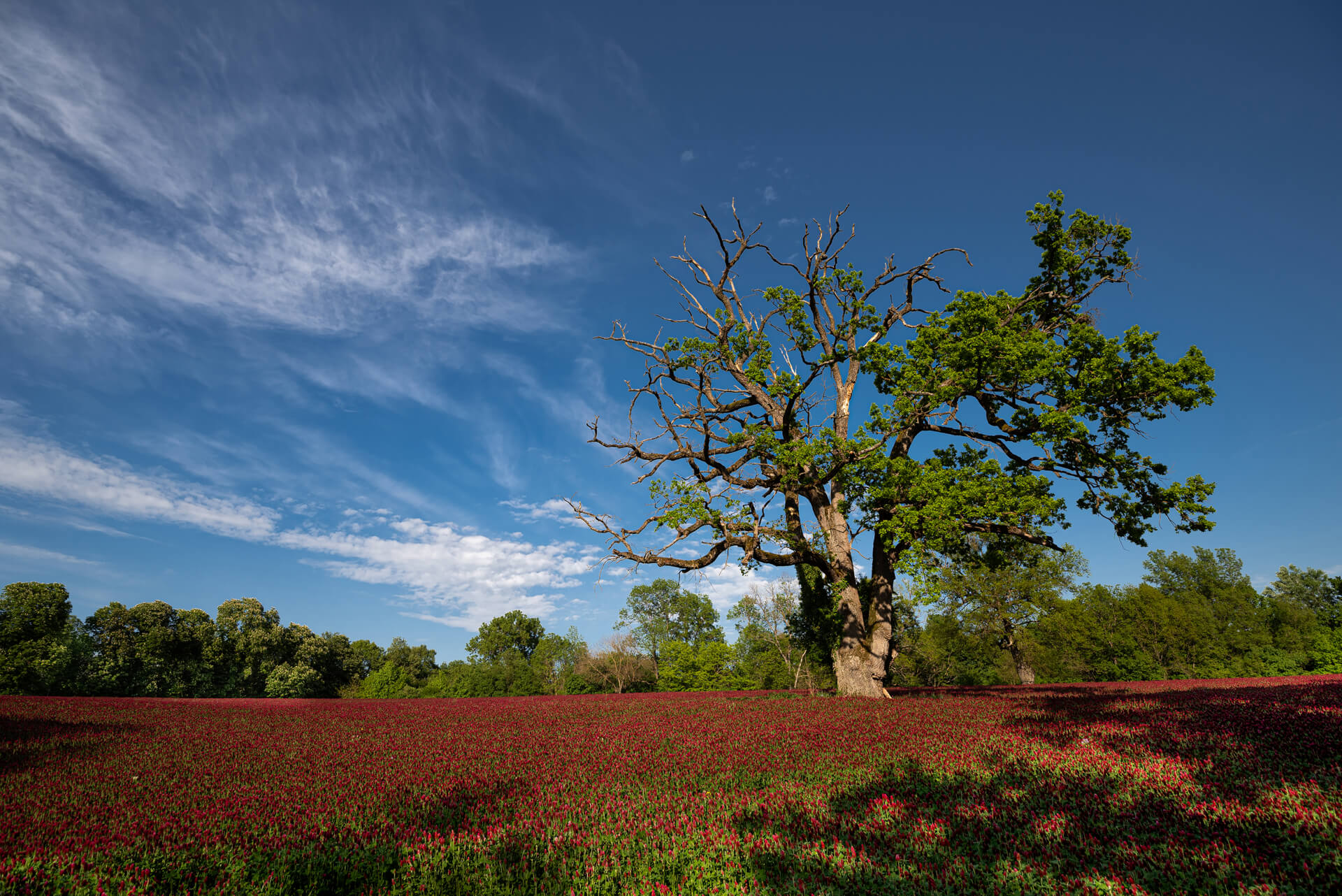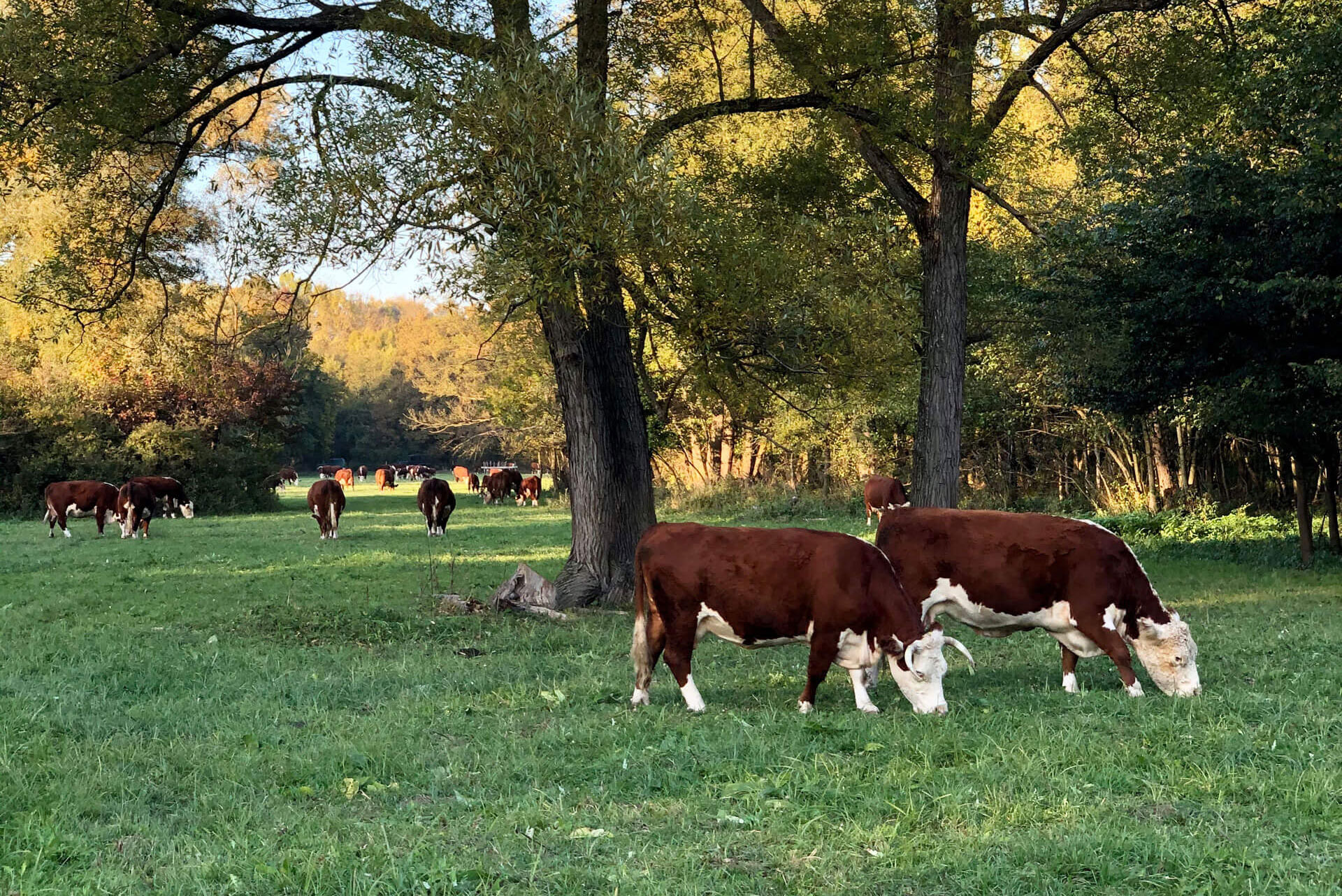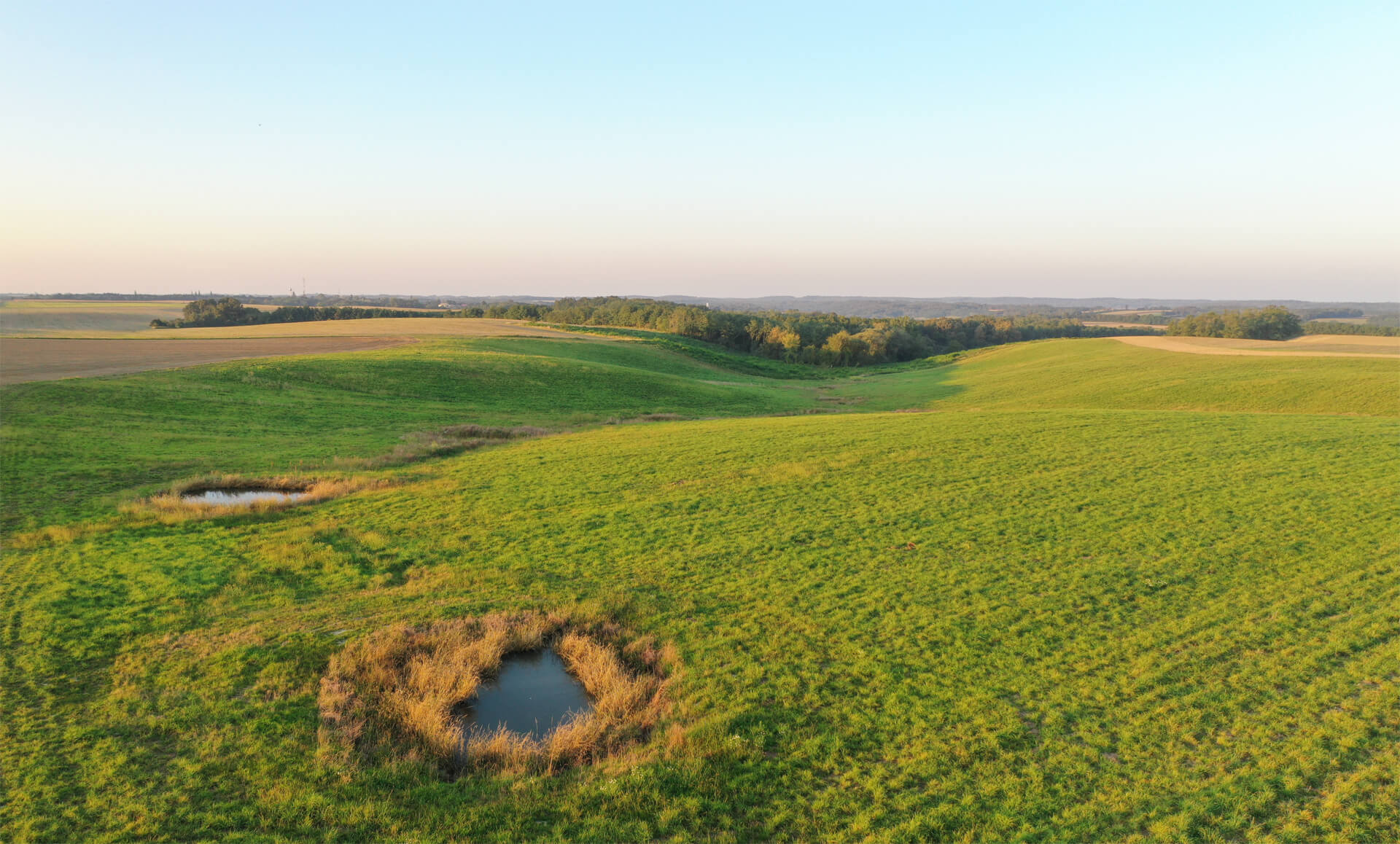Regenerative farming aims to improve the health of the soil. We are moving in that direction, with a set of practices evaluating on a seasonal basis what works and what doesn’t. Soil is at the core of the life of the estate. In order to regenerate soil life we have limited ploughing to an absolute minimum and have rejuvenated lands by growing alfalfa for several years; we have limited the use of fertilisers and chemicals where possible, and have an extensive crop rotation. We use cover crops, manure and chalk, and we prevent erosion by creating swales and ponds.

Cover crops, borders
We use a mix of grasses and clovers after harvest to prevent the lands from becoming barren, in this way preventing erosion, supporting life, and improving the nutrients in the soil. We created many kilometres of borders with a mix of grasses, clovers, herbs and wildflowers around the arable lands, to create a habitat for insects and other wildlife.
Crop rotation
In order to improve soil heath we have an extensive crop rotation schedule, consisting of main crops (wheat, corn, sunflower and rapeseed) and niche crops (hemp, crimson clover, red radish etc). On about a quarter of our arable land we grow alfalfa, to improve the soil with its root structure, biomass and nutrients for a period of four years.


Grazing and integrated livestock
Rotational grazing of our livestock is essential for maintaining the soil health of our grasslands. The manure that is collected from the winter paddocks is spread out on arable land. We also partner with local cattle and poultry farms, supplying them with straw and taking the manure back and spreading it over the land. We aim to decrease the amount of synthetic fertilizer used and increase the use of manure.
Water retention and erosion prevention
We are testing several ways to create swales and ponds to capture water and prevent erosion. With more extreme weather patterns as a consequence of climate change, we see an urgent need for this.

